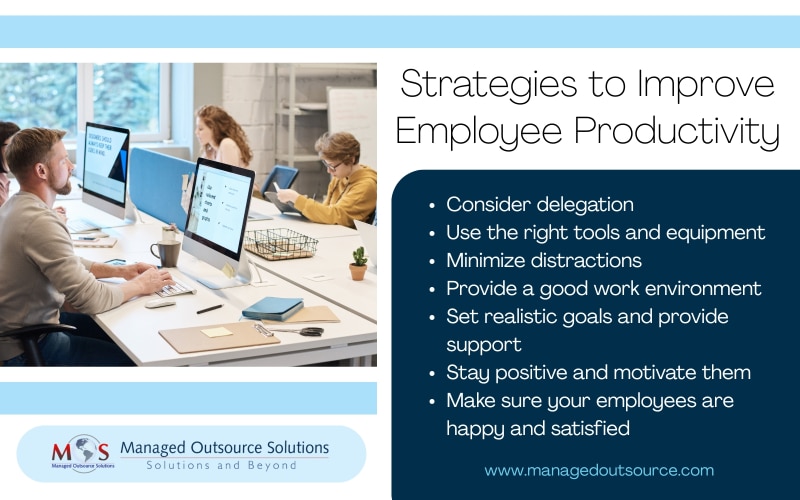Digital transformation plays a pivotal role in enhancing employee productivity by streamlining workflows, reducing manual tasks, and enabling faster access to information. One key aspect of this transformation is the adoption of document scanning services, which allow businesses to convert paper-based files into digital formats. By doing so, employees can quickly retrieve, share, and collaborate on documents without being bogged down by physical paperwork. Organizations aiming to implement digital transformation for productivity are recognizing that these benefits are essential to remain competitive in a fast-paced market. This not only saves time but also improves accuracy and efficiency across departments. As a result, organizations create a more agile and responsive work environment that supports productivity and empowers employees to focus on higher-value tasks.
Boosting Digital Transformation for Productivity
The employee experience encompasses every touchpoint an individual has with a company, from their first day to their eventual departure. It reflects how well employees feel connected to the organization’s mission, values, and overall direction. Every moment, whether minor or major, contributes to shaping this experience and influences how the organization is perceived internally and externally.
Today’s workforce, especially millennials and digital natives, expect a seamless, modern experience similar to what they enjoy as consumers. They value flexibility, technological ease, and meaningful connection with company goals. As these expectations evolve, organizations must adapt to provide an engaging and streamlined journey throughout the employee lifecycle.
Digital transformation has emerged as a major consideration in elevating the employee experience. Businesses that prioritize digital initiatives geared toward workforce engagement tend to see improvements in employee satisfaction, motivation, and overall performance. Modern tools empower employees, improve workflow efficiency, and open up new opportunities for development and growth. This shift, often referred to as digital workforce transformation, is central to future-ready organizations.
How Digital Transformation Drives Workplace Efficiency
- Streamlined Onboarding: Onboarding is a key phase that sets the tone for employee performance. Through digital onboarding solutions, organizations can eliminate repetitive paperwork and deliver centralized training resources, ensuring new hires are ready to contribute from day one. A well-organized and tech-enabled onboarding process minimizes downtime and accelerates the time it takes for new employees to reach productivity benchmarks.
- On-demand Training and Development: Continual skill development is essential for maintaining a productive workforce. Digital platforms allow employees to access learning materials on their schedule, making it easier to upskill without interrupting their workflow. Whether it’s interactive modules, webinars, or mobile learning apps, digital training empowers employees to learn at their own pace and apply new knowledge quickly.
- Flexible Work Options: With the rise of hybrid and remote work, digital transformation provides the tools necessary for flexible work arrangements. Cloud-based platforms, real-time communication tools, and secure file-sharing systems allow employees to remain productive outside the traditional office setting. These remote collaboration technologies enable consistent performance regardless of physical location. This flexibility reduces burnout, supports better time management, and helps teams maintain high output regardless of location.
- Greater Autonomy: Empowering employees with self-service technologies increases their productivity by reducing reliance on HR or admin support for routine tasks. Whether it’s updating personal details, managing leave, or accessing training materials, digital tools give employees immediate control over their responsibilities. This autonomy not only saves time but also encourages a sense of ownership in daily operations.
- Increased Operational Efficiency: Many productivity bottlenecks stem from legacy systems and manual workflows. By digitizing core functions—such as using document scanning services to convert physical files into searchable digital formats—organizations can speed up access to critical information, eliminate paper clutter, and enable faster decision-making. Employees spend less time managing documents and more time on strategic, value-driven tasks. Many organizations also adopt employee productivity improvement plans with digital solutions to measure and fine-tune these gains over time.
- Smarter Collaboration: Digital collaboration tools allow employees to communicate and coordinate more effectively. Platforms like project management systems, shared workspaces, and real-time messaging apps enable seamless teamwork, even across distributed locations. This not only enhances team cohesion but also reduces delays, miscommunication, and duplicated efforts.
Strategies to Improve Employee Productivity
- Consider delegation: Assigning specific responsibilities to workers is the best way to get things done quicker. It also improves job satisfaction and boosts employee morale. This can come with a bit of risk but delegating the tasks to qualified employees would ensure that they perform the task well. Giving your employees a leadership experience and a chance to gain skills would help enhance their efficiency and also assist with their career growth.
- Use the right tools and equipment: To successfully carry out various duties, it is important for the employees to have the right tools and equipment. In this fast-paced world, waiting for paperwork and printouts can be counterproductive, whereas having digital data, modern equipment and automated software helps the employees to be more productive. Organizations are increasingly using automation to reduce employee workload, allowing teams to focus on more strategic work.
- Minimize distractions: Any small distraction like social media, excessive mobile use, any discomfort at work and other factors can distract employees and negatively impact the way they work. Therefore, encourage your employees to keep their phones off when they are at work, so that they can focus exclusively on their job.
- Provide a good work environment: Having a comfortable workspace is important for employees to perform their duties well. A favorable work environment consists of several things like maintaining a good temperature between 68 to 70 degrees F, providing comfortable chairs and desks, and enough intervals between work, ensuring proper lighting and so on. Employees working in a good work environment tend to be more committed, focused and efficient.
- Set realistic goals and provide support: Setting very high targets without knowing whether employees can achieve them or not, is a common issue among managers. This can easily de-motivate employees and affect their productivity. So, set only achievable goals and provide clear direction. Supervise your employees and provide the right guidance that will help them achieve their goals.
- Stay positive and motivate them: This point is a continuation of the above one, motivating your employees helps them to work harder and achieve bigger. Encourage them by giving rewards to cultivate a sense of fulfillment in them and this increases their productivity.
- Make sure your employees are happy and satisfied: A stressful work place is never conducive for employees to work happily. Make sure that the needs of your employees are fulfilled and ensure they are respected, appreciated and happy. This will provide job satisfaction and encourage them to work harder. Incorporating the right employee engagement techniques can go a long way in achieving this.
Fostering an Employee-centric Culture
While the benefits of digital transformation are clear, organizations must recognize that employees may initially be wary of change. It’s essential to understand their concerns and expectations. Implementing effective change management strategies, offering training, and maintaining open communication channels will help ease the transition and encourage employee buy-in. Incorporating solutions like document scanning services can simplify workflows early in the process, making it easier for employees to adapt to new systems by providing quick access to digitized files and reducing reliance on outdated paper-based methods.
Ultimately, a digital workplace designed with employees in mind enhances engagement, supports retention, and drives business success. Prioritizing employee productivity and experience during the transformation journey not only leads to smoother adoption of new systems but also cultivates a culture of trust, innovation, and shared purpose.





